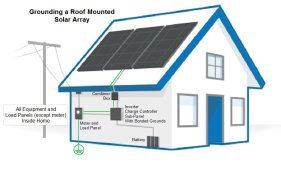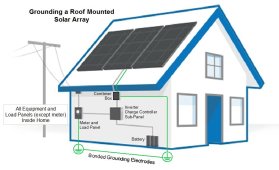Looking at the Mike Holt videos for several years, I know he has tried to get the NEC code to see it differently, The main idea as Understand what Mike advocates for is that you do not what it going thru house and all the electrical system to get to ground, but you do want it part of the main whole house grounding system, not a separate grounding system. Thus I route the array grounds to their own rod, but that rod is tied to the whole house grounding system thru the earth via 6 gauge wire.
My understanding is that you can have multi rods as long as they are tied together. This does not constitue 2 separate grounding systems nor 2 places of potential difference.




